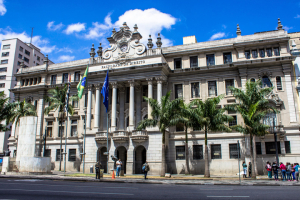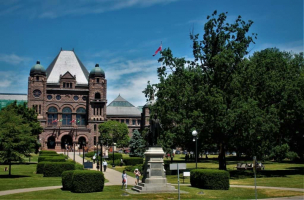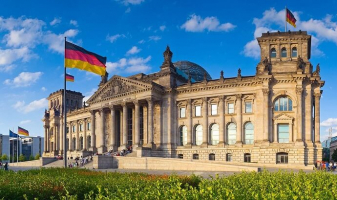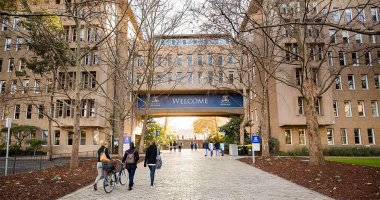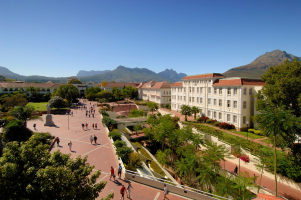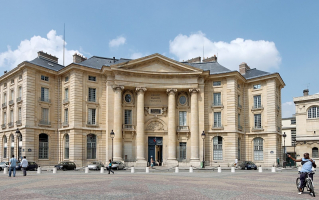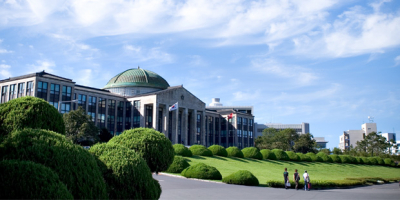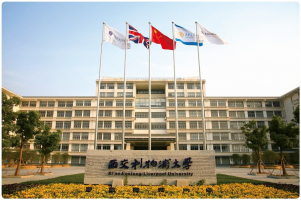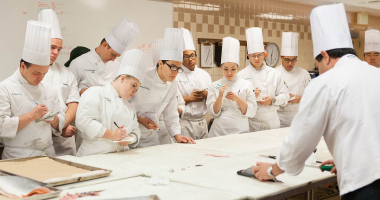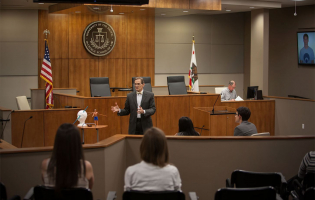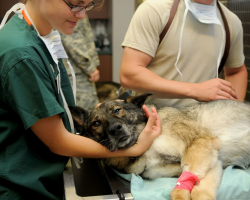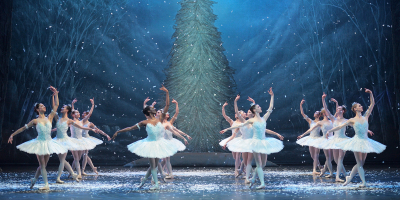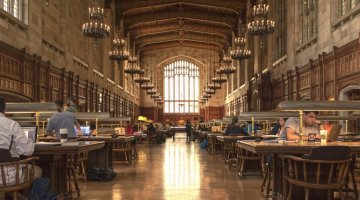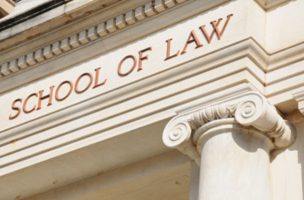Top 23 Best Global Universities
Currently, there are more than 1500 universities in the world, let's Toplist discover the top 23 best global universities in the world through the following ... read more...article!
-
The University of Oxford is the oldest university in the English-speaking world, and is actually so ancient that its founding date is unknown – though it is thought that teaching took place there as early as the 11th century.
It’s located in and around the medieval city center of Oxford, dubbed “the dreaming city of spires” by the 19th century poet Matthew Arnold, and comprises 44 colleges and halls as well as the largest library system in the UK.
There are more than 20,000 students at Oxford, around half of whom are undergraduates, while 40 per cent are international students. A quarter of the city of Oxford’s residents are students, giving the city the youngest population in the UK.
The University of Oxford does not have a main campus, its buildings and facilities instead being scattered around the medieval city center. Its colleges each have a distinctive character and traditions often dating back centuries. Colleges are self-governing institutions to which students usually apply directly. There are four academic divisions within Oxford University: Humanities, Mathematical, Physical and Life Sciences; Medical Sciences; and Social Sciences. The university’s particular strength is the sciences, and it is ranked number one in the world for medicine.
Oxford is a youthful and cosmopolitan city with plenty to see and do. There are dozens of historic and iconic buildings, including the Bodleian Libraries, Ashmolean Museum, Sheldonian Theatre, the cathedral, and the colleges themselves.
Students can choose to spend their time studying or avail themselves of the many extracurricular activities available. There’s a strong musical life at Oxford, with clubs and societies spanning all genres, from jazz, through to classical and folk. Oxford is also ranked highly for sport, with its top rowers taking part every year in the world-famous boat race with the University of Cambridge on the River Thames. Drama lovers are also well catered for, with one of the largest and most vibrant university drama scenes in the country.
Oxford has an alumni network of over 250,000 individuals, including more than 120 Olympic medalists, 26 Nobel Prize winners, seven poets laureate, and over 30 modern world leaders (including Bill Clinton, Aung San Suu Kyi, Indira Ghandi and 26 UK Prime Ministers).
It has a friendly rivalry with Cambridge for the title of best university in the UK and is regularly ranked as being one of the top three universities in the world. Notable Oxford thinkers and scientists include Tim Berners-Lee, Stephen Hawking and Richard Dawkins.Nation: United Kingdom
No. Student: 20,774
No. of student per staff: 11.1
International Student: 41%
Female/ Male: 46 : 54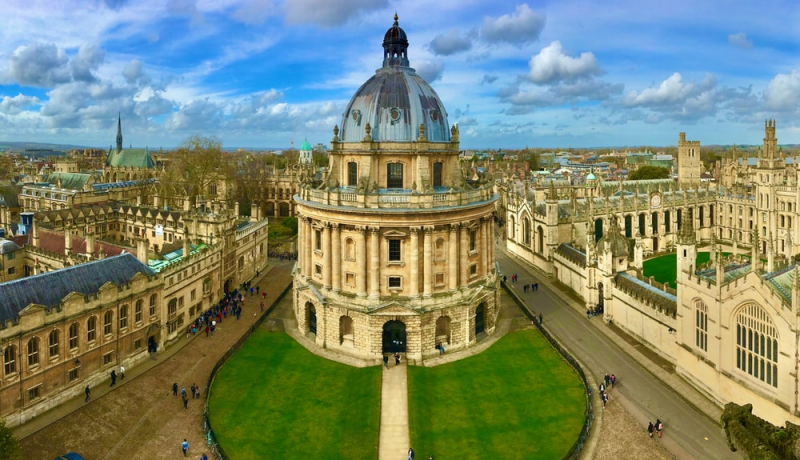
University of Oxford is the oldest university in the English-speaking world. Photo: unischolarz -
Located 35 miles south of San Francisco and 20 miles north of San Jose, Stanford University is in the heart of Northern California’s dynamic Silicon Valley, home to Yahoo, Google, Hewlett-Packard, and many other cutting-edge tech companies that were founded by and continue to be led by Stanford alumni and faculty. Nicknamed the “billionaire factory”, it is said that if Stanford graduates formed their own country it would boast one of the world’s largest ten economies.
Covering 8,180 acres, Stanford has one of the largest university campuses in the US, with 18 interdisciplinary research institutes and seven schools: the Graduate School of Business; School of Earth, Energy & Environmental Sciences; Graduate School of Education; School of Engineering; School of Humanities and Sciences; Law School; and School of Medicine.
Stanford University was founded in 1885 by California senator Leland Stanford and his wife, Jane, to “promote the public welfare by exercising an influence in behalf of humanity and civilization”. The couple’s only child had died of typhoid, and their decision to build a university on their farm was intended as a memorial. From the start the university was non-sectarian, co-educational and affordable, teaching both the traditional liberal arts and the technology and engineering that was shaping the new America at the time.
Fast forward more than a century, and Stanford counts 19 Nobel laureates within its community and is regularly ranked among the top three universities in the world. Nicknamed “The Farm” from the days when horses roamed there, Stanford’s campus is now a thriving community of more than 11,000 creative and accomplished people from around the world. Nearly all undergraduate and 60 per cent of graduate students live on campus, so it is hardly surprising that student life is rich and diverse, with over 625 organized student groups.
Sport is popular, with students, faculty and staff enjoying state-of-the-art recreational facilities and wellness programs. Stanford students compete in 36 varsity and 32 club sports, including baseball, football, basketball, and squash. Sports teams are referred to as the “Stanford Cardinal”.
Stanford also has a rich tradition of fostering creativity and the arts: there is a vibrant campus arts district and two world-class museums which host regular exhibitions. Eight dining halls, a teaching kitchen and organic gardens provide the campus community with healthy, sustainable meals. The close-knit communal nature of life on campus has even given rise to “Stanford speak”, a special language only spoken on campus.Nation: United States
No. Student: 16,223
No. of student per staff: 7.4
International Student: 23%
Female/ Male: 44 : 56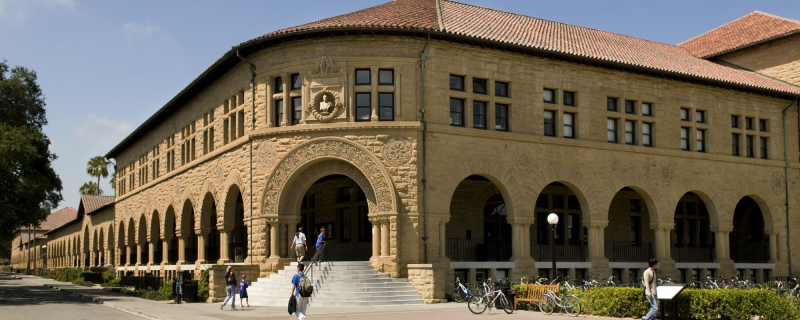
Stanford University is in the heart of Northern California’s dynamic Silicon Valley, home to Yahoo, Google, Hewlett-Packard, and many other cutting-edge tech companies that were founded by and continue to be led by Stanford alumni and faculty. Photo: Stanford University -
Established in 1636, Harvard is the oldest higher education institution in the United States, and is widely regarded in terms of its influence, reputation, and academic pedigree as a leading university in not just the US but also the world.
Located in Cambridge, Massachusetts, three miles north-west of Boston, Harvard’s 209-acre campus houses 10 degree-granting schools in addition to the Radcliffe Institute for Advanced Study, two theaters, and five museums. It is also home to the largest academic library system in the world, with 18 million volumes, 180,000 serial titles, an estimated 400 million manuscript items and 10 million photographs.
Like most of the United States’ pre-Civil War colleges, Harvard was founded to train clergy, but Harvard’s curriculum and student body quickly secularized, and in the 20th century admissions policy was opened up to bring in a more diverse pool of applicants.
Now, a total of 21,000 students attend the university, each of whom at some point can be seen bustling past the famous statue of John Harvard, the university’s first benefactor and founder, which looks on benignly in the center of the campus. The bronze statue’s gleaming foot is due to almost incessant rubbing by tourists and students, who believe the act brings good luck.
Only the academic elite can claim a place at Harvard, and the nominal cost of attendance is high – though the university’s hefty endowment is such that it can offer generous financial aid packages, which around 60 per cent of students take advantage of.
As freshmen, students live in one of the dormitories in Harvard Yard, a prime location, and eat in the historic and picturesque Annenberg dining hall. Harvard students are active around and beyond campus, with over 400 official student societies including extracurricular, co-curricular and athletic opportunities. Whether playing on the field in Harvard Stadium, fostering entrepreneurial activities at the Harvard innovation lab or writing and editing at the daily newspaper the Harvard Crimson, student life is a rich and rewarding experience.
Harvard's alumni include eight US presidents, several foreign heads of state, 62 living billionaires, 359 Rhodes Scholars, and 242 Marshall Scholars. Whether it be Pulitzer Prizes, Nobel Prizes, or Academy Awards, Harvard graduates have won them. Students and alumni have also won 108 Olympic medals between them. The university is regularly ranked number one in the world, and the consistency of its chart-topping performances shows that success is yet to breed complacency.Nation: United States
No. Student: 21,261
No. of student per staff: 9.3
International Student: 25%
Female/ Male: 49 : 51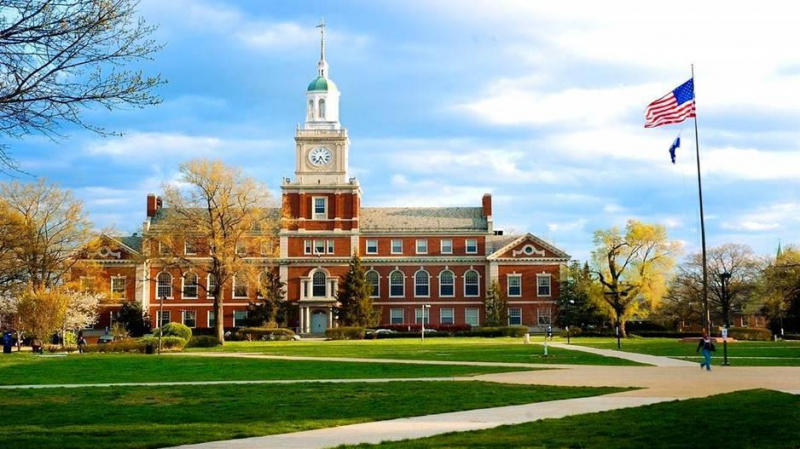
Established in 1636, Harvard is the oldest higher education institution in the United States, and is widely regarded in terms of its influence, reputation, and academic pedigree as a leading university in not just the US but also the world. Photo: Apkpure -
The California Institute of Technology (Caltech) is a world-renowned science and engineering research and education institution, located in Pasadena, California, around 11 miles northeast of downtown Los Angeles.
Caltech has a high research output as well as many high-quality facilities such as the Jet Propulsion Laboratory (owned by NASA), the Caltech Seismological Laboratory, and the International Observatory Network. It’s among a small group of institutes of technology in the United States primarily devoted to teaching technical arts and applied sciences, and its fiercely competitive admissions process ensures only a small number of the most gifted students are admitted.
The university was founded as a preparatory and vocational school by Amos G. Throop in 1891, with the mission “to expand human knowledge and benefit society through research integrated with education”. It became a major hub of US scientific research in the early 20th century and was instrumental to the United States’ war effort during World War II.
Today, it is home to the Einstein Papers Project, an initiative seeking to preserve, translate and publish selected papers from the estate of Albert Einstein. It has also established an energy innovation hub that aims to discovery revolutionary methods of generating fuels directly from sunlight.
Caltech’s 124-acre campus is within walking distance of Old Town Pasadena and the Pasadena Playhouse District, and the two locations are frequent getaways for students. Life on campus is rich with social activities, clubs, associations and recreational facilities. Intercollegiate sport is taken very seriously, with the Caltech Beavers (the beaver – nature’s engineer – is the college’s mascot) competing in 13 intercollegiate sports.
Caltech also offers excellent opportunities for the study and performance of music, theater, and the visual arts, all activities that play a vital role in realizing Caltech’s mission to role in realizing the Institute's mission of "educating outstanding students to become creative members of society". Providing a touch of grandeur, the Athenaeum is a stately building in the center of the campus where members can go for formal and informal dining, meetings, rendezvous and private parties.
The balance at Caltech between a rigorous academic curriculum and activities that promote personal development ensures time spent there for students is both formative and an invaluable staging post to a successful career. Although it may lack the reputation of Ivy League universities or the likes of Oxford and Cambridge, Caltech is undoubtedly one of the best universities in the world, a fact reflected in all the university rankings, which regularly single out technology and engineering as the school’s key academic strengths.Nation: United States
No. Student: 2,238
No. of student per staff: 6.3
International Student: 33%
Female/ Male: 36 : 64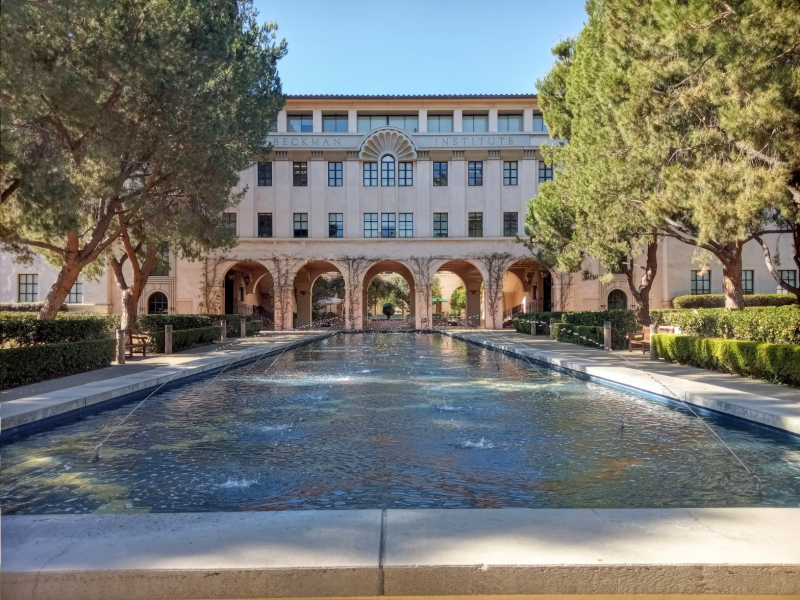
Living in Pasadena, the campus of the California Institute of Technology (better known as Caltech) has been a welcome respite during the pandemic. Photo: eliteprepvn.com -
“Mind and Hand” is the thought-provoking motto of the Massachusetts Institute of Technology, known also as MIT. This motto enigmatically encapsulates this famous institution’s mission to advance knowledge in science, technology and areas of scholarship that can help to make the world a better place.
At its founding in 1861, MIT was initially a small community of problem-solvers and science lovers eager to bring their knowledge to bear on the world. Today, MIT has evolved into an educational behemoth, with some 1,000 faculty members and more than 11,000 undergraduate and graduate students.
MIT is now an independent, coeducational, privately endowed university organized into five schools (architecture and planning; engineering; humanities, arts, and social sciences; management; science). Yet the principle of educational innovation remains at the core of MIT’s educational philosophy.
MIT researchers are at the forefront of developments in artificial intelligence, climate adaptation, HIV, cancer, and poverty alleviation, while in the past MIT research has fuelled scientific breakthroughs such as the development of radar, the invention of magnetic core memory and the concept of the expanding universe.
Science and technology are not the only strings to MIT’s bow, however. Approximately 20 percent of MIT undergraduates join a sports team, and with 33 varsity sports MIT boasts one of the broadest intercollegiate athletic programs in the world.
A vibrant arts culture also permeates college life. There are 12 museums and galleries on campus, with the MIT Museum drawing nearly 125,000 visitors each year. Students participate in more than 60 music, theatre, writing and dance groups, and faculty members of MIT even include Pulitzer Prize winners and Guggenheim fellows.
MIT is set in 168 acres of grounds that extend for more than a mile along the Cambridge side of the Charles River basin. The campus features stunning landmarks designed by the likes of architects Alvar Aalto, Frank Gehry, and Steven Hollin, as well as buildings in a range of architectural styles, from neoclassical to modernist and brutalist.
At its edges, the campus merges with various Cambridge neighborhoods, including Kendall Square which is one of the most innovative square miles on the planet. The close association of industry and research has helped MIT alumni go on to launch more than 30,000 active companies, creating 4.6 million jobs and generating roughly $1.9 trillion in annual revenue. No wonder then that a nation of MIT graduates would be equivalent to the 10th-largest economy in the world.Nation: United States
No. Student: 11,276
No. of student per staff: 8.4
International Student: 34%
Female/ Male: 39 : 61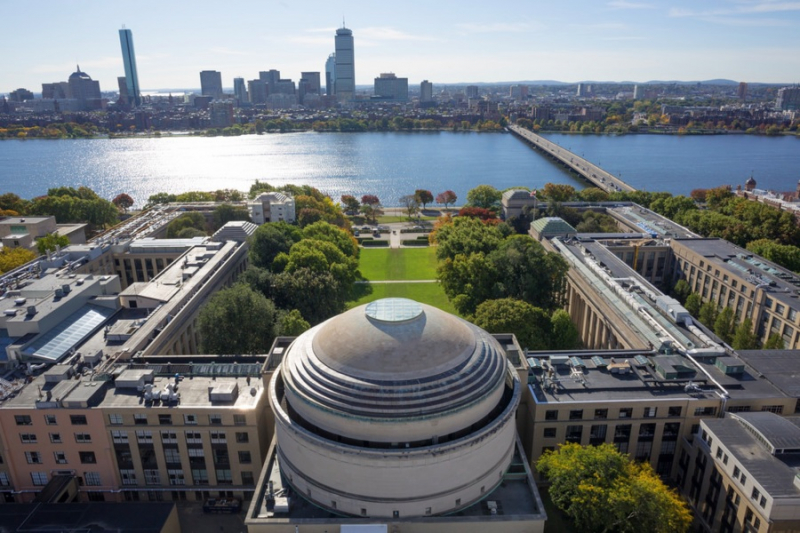
At its founding in 1861, MIT was initially a small community of problem-solvers and science lovers eager to bring their knowledge to bear on the world. Photo: vnis.edu.vn -
The Cambridge Master of FinanceAcademically rigorous and commercially relevant, our post experience Master of Finance degree will sharpen your perspective and broaden your theoretical knowledge. During your year in Cambridge you will develop your professional skills and obtain the tools to break through into new areas of finance.You will gain a thorough grounding in the core concepts and a hands-on appreciation of applied finance.
Importantly, you will tap into the resources of Cambridge Judge Business School, the University of Cambridge and a broad network of senior finance professionals. You will emerge with the knowledge, confidence and connections to progress to the next stage of your finance career.Applicants are required to have a minimum of two years post-graduation finance work experience, as well as a strong academic record.
To find out more, please visit our website: www.jbs.cam.ac.uk/mfin
Nation: United Kingdom
No. Student: 19,370
No. of student per staff: 11.0
International Student: 38%
Female/ Male: 47 : 53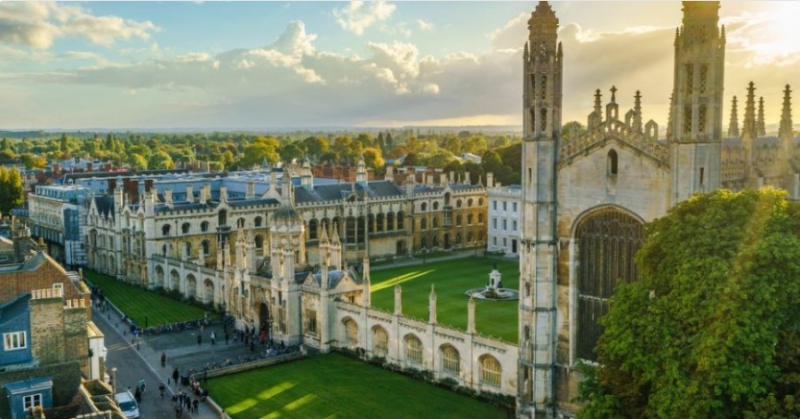
University of Cambridge. Photo: vietint.net -
Founded in 1868, the University of California, Berkeley (UCB) is a public research university and the flagship institution of the ten research universities affiliated with the University of California system.
Berkeley is one of the 14 founding members of the Association of American Universities and is home to some world-renowned research institutes, including the Mathematical Sciences Research Institute and the Space Sciences Laboratory.
Berkeley alumni, faculty and researchers include 99 Nobel laureates, 23 Turing Award winners, and 14 Pulitzer Prize winners. Faculty member J. R. Oppenheimer led the Manhattan project to create the first atomic bomb, while Berkeley’s Nobel laureate Ernest Lawrence invented the cyclotron, through which UC Berkeley scientists and researchers discovered 16 chemical elements of the periodic table.
Berkeley started out with little more than 40 students but, as the first full-curriculum university in California, it quickly gained ground on its illustrious forebears. By the early 1940s, it had grown substantially and was ranked second only to Harvard.
During this decade, Berkeley gained further prestige through its radiation laboratory, which was instrumental in the project to develop an atomic bomb. During the sixties, Berkeley gained a worldwide reputation for student activism, thanks to the Free Speech Movement of 1964 and campus opposition to the Vietnam War. In 1969, the then governor of California Ronald Reagan called the Berkeley campus "a haven for communist sympathizers, protesters, and sex deviants," though today’s students tend to be more politically moderate.
The Berkeley campus encompasses approximately 1,232 acres of the bay area of Los Angeles, with many of its Beaux-Arts-style buildings recognized as California Historical Landmarks.
Three quarters of its 40,000 students are undergraduates, giving life on campus a youthful feel in vibrant, urban surrounds. Most undergraduate students live in residential halls, where they can make friends, work and play in a safe environment designed to enhance the academic experience through a culture of care.
There are also student co-ops and not-for-profit housing cooperatives for Berkeley students, with over 1,300 students living in 17 houses and three apartment cooperatives around the Berkeley campus. Students can play sports, and join clubs and societies spanning every imaginable interest. On campus, students can visit the Lawrence Hall of Science, watch sport at the newly-renovated California Memorial Stadium, take in a noon concert, or stroll through Sproul Plaza, the social heart of Berkeley campus.Nation: United States
No. Student: 39,918
No. of student per staff: 19.8
International Student: 17%
Female/ Male: 51 : 49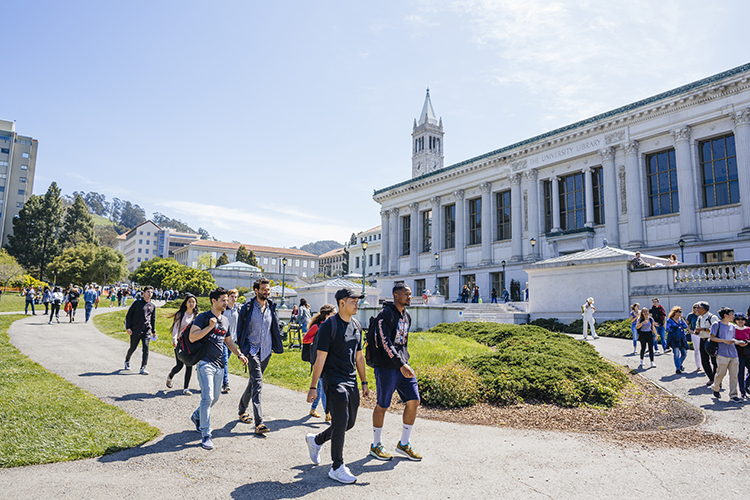
University of California, Berkeley (UCB). Photo: aaevietnam.com -
Yale University is a private research university and a member of the prestigious Ivy League, a group of America’s most celebrated higher education institutions. Situated in New Haven, Connecticut, the first planned city in America, Yale was founded by English Puritans in 1701, making it the third-oldest higher education institution in the United States.
Today, the city, which is part of the New York metropolitan area, is very much dominated by Yale, though it’s also billed as the “Cultural Capital of Connecticut”. According to the New York Times, New Haven is also extremely picturesque, with “art almost everywhere you look”.
Yale University’s central campus spans 260 acres and includes buildings from the mid-18th century. The university is organized into 14 schools: the original undergraduate college, the Yale Graduate School of Arts and Sciences and 12 professional schools.
Undergraduates follow a liberal arts curriculum which allows you to think and learn across disciplines before deciding upon a major. Perhaps its most distinctive feature, Yale undergraduates are organized into a social system of residential colleges, which allows them to experience the cohesiveness and intimacy of a small school while still enjoying the cultural and scholarly resources of a large university.
A recently unveiled portrait of Barack Obama was by a Yale alumnus, and strolling across the Yale campus, you’ll find that you’re surrounded by public art. Be it in courtyards or plazas, lobbies or lecture halls, art at Yale inspires reflection and offers aesthetic pleasure.
College life is similarly rich, reflecting the diversity of cultures and nationalities on campus. There’s always a packed arts calendar which includes exhibitions at world-class museums and galleries. There’s also a Tony Award-winning theater, Yale Cabaret – a theater-restaurant run by students – and hundreds of student groups, ranging from the serious to the silly.
On top of this, you’ll also find the usual array of top quality sports facilities, a golf course and centers for tennis, polo, sailing, ice hockey, and more as well as competitive sports, with over 30 men’s and women’s varsity teams.
To study at Yale is to join great company: four Yale graduates signed the American Declaration of Independence, and the university has educated five US presidents: William Howard Taft, Gerald Ford, George H. W. Bush, Bill Clinton and George W. Bush. It is rightly regarded as one of America and the world’s most prestigious universities, with competition to be admitted as fierce as it gets.Nation: United States
No. Student: 12,910
No. of student per staff: 6.0
International Student: 20%
Female/ Male: 50 : 50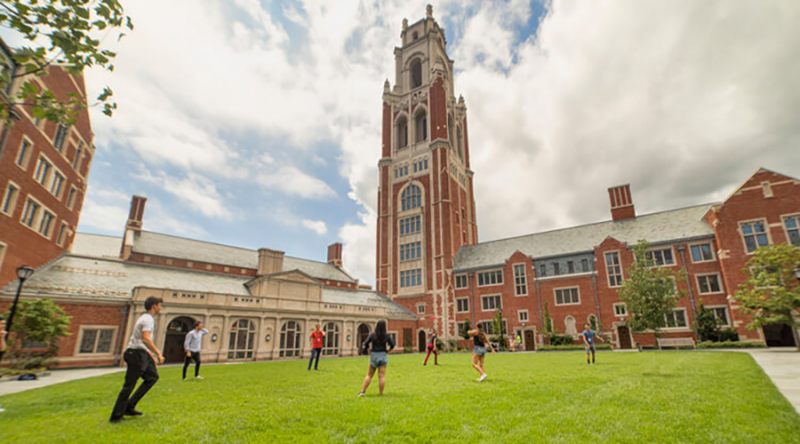
Yale University. Photo: ivyachievement.vn -
Princeton is one of the oldest and most prestigious universities in the United States. It was founded in 1746 and moved to its current site in New Jersey in 1896.
Princeton is renowned for the spectacular greenery of its campus and for the architectural splendor of some of its landmark buildings, such as its Lewis Library, which was designed by Frank Gehry. Its student body is relatively small, with fewer than 10,000 enrolled in total, and international students make up 12 per cent of undergraduates.
Princeton is one of the world’s foremost research universities, and has educated two US presidents, James Madison and Woodrow Wilson. Other distinguished graduates include Michelle Obama, actors Jimmy Stewart and David Duchovny, Google chairman Eric Schmidt and Apollo astronaut Pete Conrad.
Princeton was founded by New Light Presbyterians to provide training to its ministers. After the American Civil War, the college expanded, and its curriculum was overhauled. Around the turn of the 20th century, it officially became a university and its famous graduate school opened.
Today’s Princeton provides undergraduate and graduate education in the humanities, social sciences, natural sciences, and engineering as well as offering a number of professional degrees.
Princeton’s main campus is spread across 500 acres and has around 180 buildings, including 10 libraries. The main campus was named one of the most beautiful in the United States by New York’s Travel+Leisure magazine. Most Princeton students live, eat, study, work, and are at leisure on campus.
The Ivy League institution guarantees accommodation to all of its undergraduate students across the four years of their degree and is committed to building a diverse campus community. Residential colleges offer a variety of academic, social, cultural and recreational programs, and opportunities abound for students to engage in interests beyond their academic study, whether that be writing for a literary publication, learning the science of beekeeping, or singing with an a capella group.
The university is within easy reach of both New York City and Philadelphia, with the “Dinky” shuttle train providing a regular one-hour service to both cities.
Studying at Princeton surrounded by natural beauty and architectural gems brings the best out in students. Several alumni and faculty members have been awarded Nobel prizes, and the university is consistently ranked in the top ten worldwide. Admissions are need-blind and, through a combination of grants and college jobs, few students graduate in debt – even though 60 percent of incoming students receive financial aid.Nation: United States
No. Student: 8,091
No. of student per staff: 8.0
International Student: 23%
Female/ Male: 46 : 54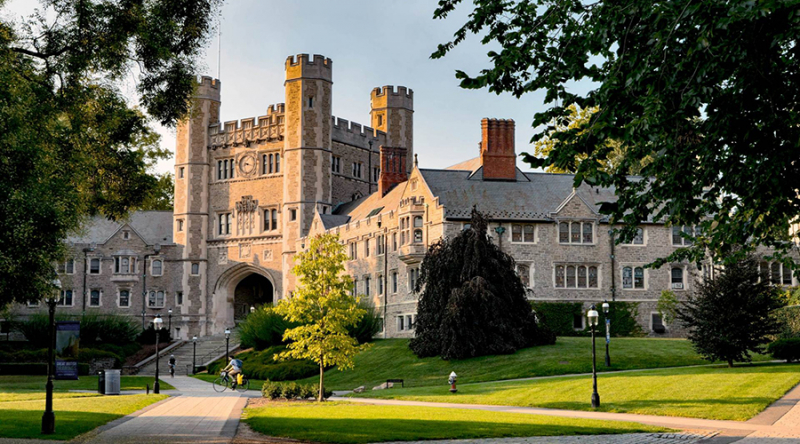
Princeton University. Photo: ivyachievement.vn -
As part of The University of Chicago, we share this world-renowned university’s core values, which shape our distinctive intellectual culture. At Chicago Booth, we constantly question and test ideas, and seek proof. This extraordinarily effective approach to business leads to new ideas and innovative solutions.
In fact, seven of our faculty members have won Nobel Prizes for these ideas. We are proud to claim: an unmatched faculty degree and open enrollment programs offered on three continents a global body of 49,000 accomplished alumni strong and growing corporate relationships that provide a wealth of lifelong career opportunities.
Since 1898, we have produced ideas and leaders that shape the world of business. Our rigorous, discipline-based approach to business education transforms our students into confident, effective, respected business leaders prepared to face the toughest challenges. We are the University of Chicago Booth School of Business.
Nation: United States
No. Student: 14,292
No. of student per staff: 5.9
International Student: 31%
Female/ Male: 46 : 54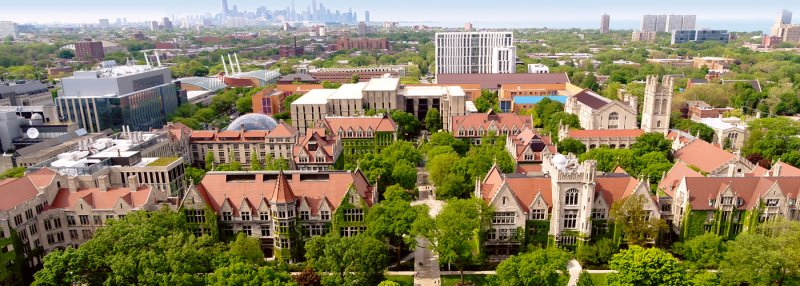
The University of Chicago. Photo: usnews.com -
Imperial College London is a one-of-a-kind institution in the UK, focusing solely on science, engineering, medicine and business. Imperial offers an education that is research-led, exposing you to real world challenges with no easy answers, teaching that opens everything up to question and opportunities to work across multi-cultural, multi-national teams.
Imperial is based in South Kensington in London, in an area known as ‘Albertopolis’, Prince Albert and Sir Henry Cole’s 19th century vision for an area where science and the arts would come together. As a result, Imperial’s neighbours include a number of world leading cultural organizations including the Science, Natural History and Victoria and Albert museums; the Royal Colleges of Art and Music; and the Royal Albert Hall, where all of their students also graduate.There is plenty of green space too, including two Royal Parks (Hyde Park and Kensington Gardens) within 10 minutes’ walk of campus. Travel to and from the area is also really easy as it’s served by three Tube lines and many bus routes.
One of the most distinctive elements of an Imperial education is that students join a community of world-class researchers. The cutting edge and globally influential nature of this research is what Imperial is best known for. It’s the focus on the practical application of their research – particularly in addressing global challenges – and the high level of interdisciplinary collaboration that makes their research so effective.
The number of award winners, Nobel Prize holders and prestigious Fellowships (Royal Society, Royal Academy of Engineering, Academy of Medical Sciences) amongst their staff is a testament to the outstanding contributions they have made in their respective fields.Imperial is one of the most international universities in the world, with 59% of its student body in 2019-20 being non-UK citizens and more than 140 countries are currently represented on campus. Meanwhile, the College’s staff, like their students, are diverse in their cultural backgrounds, nationalities and experiences.
Nation: United Kingdom
No. Student: 17,176
No. of student per staff: 11.6
International Student: 58%
Female/ Male: 39 : 61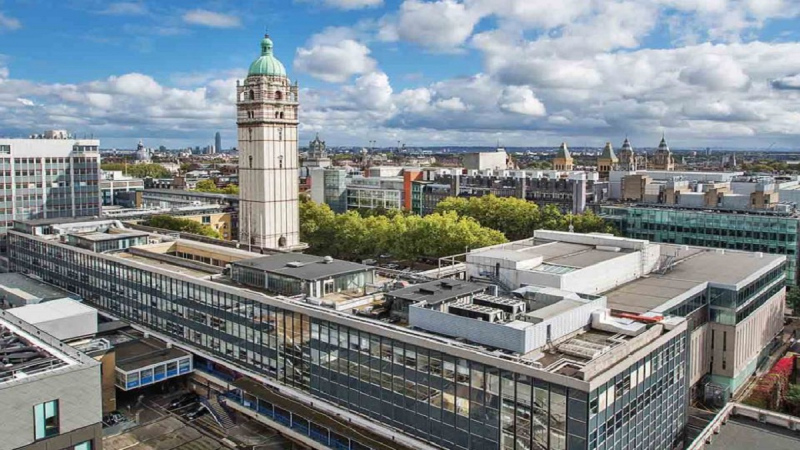
Imperial College London. Photo: vntalent.edu.vn -
Johns Hopkins University is an American private research university in Baltimore, Maryland. It was founded in 1876, and named after its first benefactor, the American entrepreneur, abolitionist, and philanthropist Johns Hopkins.
It blazed a trail among higher education institutions by being the first US research university, and today it puts more money into research than any other US academic institution. It’s also widely credited with revolutionizing higher education by being the first US institution to integrate teaching and research. To date, Johns Hopkins has spawned 27 Nobel laureates, including the former US president Woodrow Wilson.
Johns Hopkins is organized into 10 divisions on campuses in Maryland and Washington, DC with international centers in Italy, China, and Singapore. Johns Hopkins regularly ranks in the top 10 universities in the US, and is also competitive globally, especially for its undergraduate programs.
Johns Hopkins enrolls more than 24,000 full- and part-time students across its nine academic divisions with faculty members and students studying, teaching, and learning across more than 260 programs in the arts and music, the humanities, the social and natural sciences, engineering, international studies, education, business, and the health professions.
Applicants at undergraduate level are generally ranked in the top 10 percent of their high school class, and over time applications and selectivity has risen. For the class graduating in 2020, the acceptance rate was 11.4 percent.
Most Johns Hopkins undergraduates study at Homewood, a 140-acre North Baltimore campus that is home to the schools of engineering and arts and sciences. It’s a traditional college setting in the heart of a big and blossoming city, with red-brick buildings, tree-lined pathways, an iconic clock tower, and expansive green quads.
Nearly all undergraduates based in the main campus live in residence halls during their first two years, where they make friends and take advantage of what has officially been named one of the best campus dining programs in the US.
There’s also easy access to top class arts and culture: the school’s conservatory, the Peabody Institute, regularly hosts musical extravaganzas, concerts and performances, while the Center for Visual Arts, located next to the Baltimore Museum of Art, provides plenty of sources for artistic inspiration.
Off-campus, students can venture into Baltimore itself, a city with a rich history as a working-class port that has blossomed into a hub of social, cultural, and economic activity – yet retains a small-town feel.Nation: United States
No. Student: 16.432
No. of student per staff: 4,4
International Student: 27%
Female/ Male: 52: 48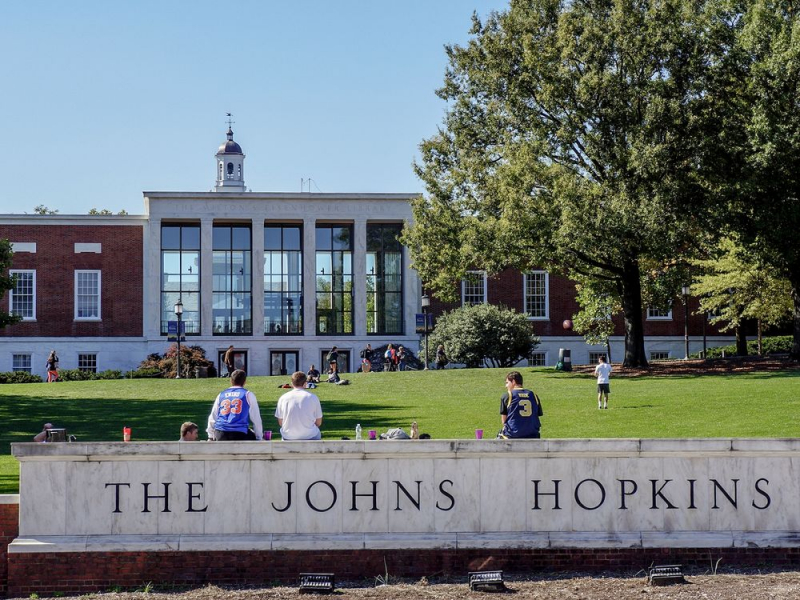
Johns Hopkins University. Photo: sunrisevietnam.com -
The University of Pennsylvania Graduate School of Education (Penn GSE) is one of the nation’s premier education schools. At Penn GSE, students and faculty enjoy an Ivy League environment that supports both practical knowledge building and high-quality research.
Our alumni are recognized as some of the world’s most influential education leaders, and our distinguished professors are pioneers in their fields. Penn GSE offers programs leading to the Ph.D., Ed.D., M.S.Ed., and M.Phil.Ed degrees. GSE seeks students, who are interested in promoting, a deeper understanding of educational issues and contributing to societal change.
The curriculum places a strong emphasis on the interactive relationship of theory, research, and practice, often focusing on urban education. Students engage in extensive fieldwork throughout their studies and are both learners and agents of change within the university and the surrounding Philadelphia neighborhoods.
Nation: United States
No. Student: 20.771
No. of student per staff: 6,4
International Student: 21%
Female/ Male: 52: 48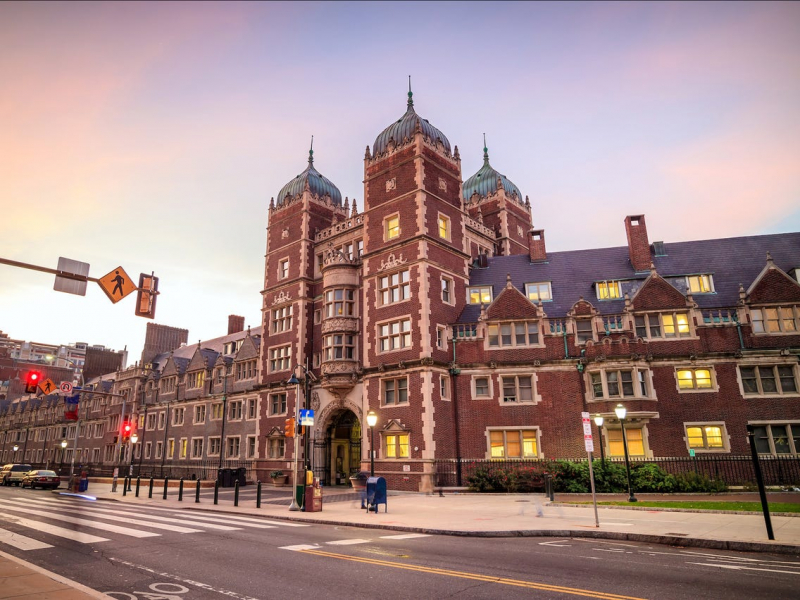
University of Pennsylvania. Photo: immica.org -
ETH Zurich is one of the world's leading universities in science and technology and is known for its cutting-edge research and innovation. It was established in 1855 as the Swiss Federal Polytechnic School, and a century and a half later the university can count 21 Nobel laureates, 2 Fields Medalists, 2 Pritzker Prize winners, and 1 Turing Award winner as alumni, including the great Albert Einstein himself.
The university, officially called the Swiss Federal Institute of Technology Zurich in English, has 16 departments that offer academic education and conduct scientific research in subjects ranging from engineering and architecture to chemistry and physics.
Education at ETH Zurich combines solid theory with practical application, and most degree programs build on strong mathematical foundations. For undergraduates the main teaching language is German, while most master's programs and doctoral studies are in English.
Located in Zurich, Switzerland's largest city, ETH Zurich has two main locations: in downtown Zurich and on a modern campus built on a hill in the outskirts of the town. Students at ETH face an intensive workload, but they can still find time for cultural and other leisure activities and for attending the many regular symposia and conferences on campus, where some of the best minds in science come to speak.Nation: United States
No. Student: 19.632
No. of student per staff: 13,1
International Student: 40%
Female/ Male: 32: 68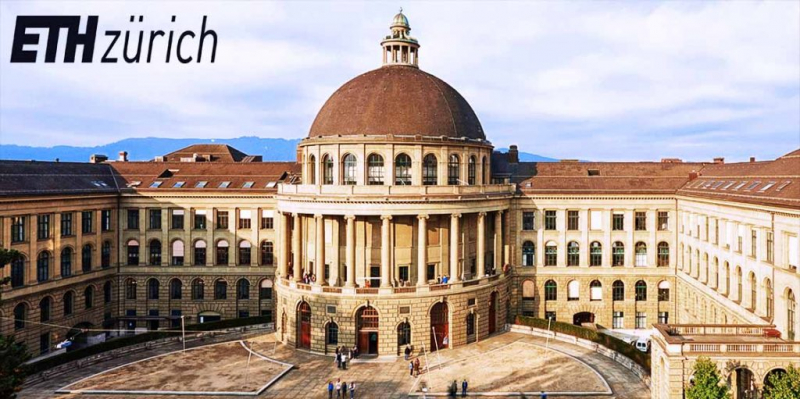
ETH Zurich is one of the world's leading universities in science and technology and is known for its cutting-edge research and innovation. Photo: nguonhocbong.com -
Based in warm and sunny Los Angeles, the University of California, Los Angeles (UCLA) is rated as one of the top universities in the world.
UCLA graduates are in the enviable position of being among the world’s most employable students fresh out of uni, as suggested by UCLA’s impressive performance in the QS Graduate Employability Rankings
UCLA ranks among the top universities in the world for:
- English language and literature
- Geography, linguistics
- Modern languages
- Electrical and electronic engineering
- Biological sciences
- Medicine
- Psychology
- Chemistry
- Mathematics
- Communication and media studies
- Education and training
- Anthropology
- Archaeology
- Arts and humanities
- Life sciences and medicine
Nation: United States
No. Student: 41,673
No. of student per staff: 10.0
International Student: 17%
Female/ Male: 55 : 45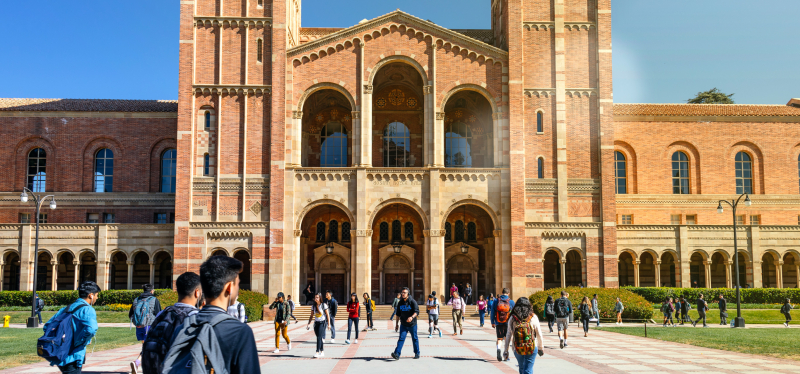
University of California, Los Angeles. Photo: admission.ucla.edu -
Founded in 1826 in the heart of London, UCL is London's leading multidisciplinary university, with more than 13,000 staff and 42,000 students from 150 different countries.
UCL has always done things differently. As the first English university to champion inclusivity, diversity and open mindedness, they have never been afraid to rethink the norms of education and research.
UCL is a diverse community with the freedom and courage to challenge, to question and to think differently. Through a progressive approach to teaching and research, our world leading academics, curious students and outstanding staff continually pursue excellence, break boundaries and make an impact on real world problems.
Moreover, our programmes incorporate learning activities and industrial experiences that will help develop commercial competencies, internal organisational management skills, and a high degree of creativity, preparing scientists, engineers, physicians, and other innovators for leadership roles in the next generation of technology-intensive organisations, as well as in finance and consulting firms.
Nation: United Kingdom
No. Student: 34,590
No. of student per staff: 10.8
International Student: 55%
Female/ Male: 57 : 43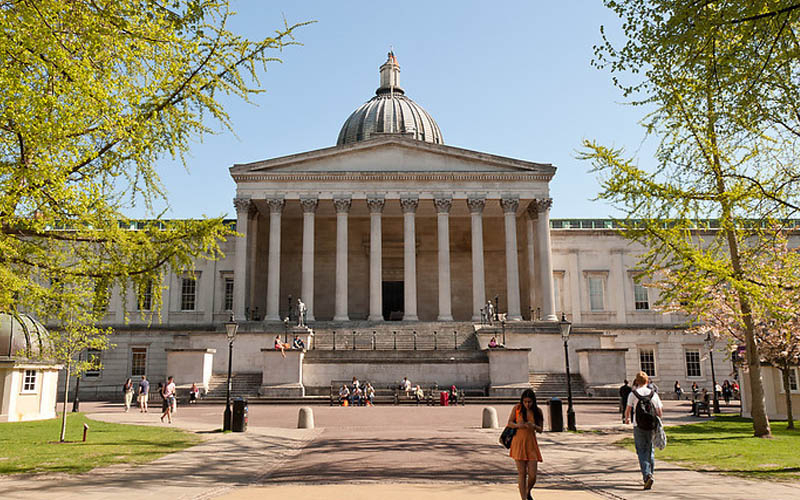
Founded in 1826 in the heart of London, UCL is London's leading multidisciplinary university, with more than 13,000 staff and 42,000 students from 150 different countries. Photo: Ulc.ac.uk -
For more than 60 years, Columbia University’s School of International and Public Affairs has been educating professionals who work in public, private and nonprofit organizations to make a difference in the world. Through rigorous social science research and hands-on practice, SIPA’s graduates and faculty strive to improve social services, advocate for human rights, strengthen markets, protect the environment, and secure peace, in their home communities and around the world.
The curricula of SIPA’s seven degree programs all combine training in analytical methods and practical management skills to ensure that graduates are prepared to understand problems and implement solutions. Students combine these core skills with a focus on a policy area of their choice, and they typically engage in a practice-oriented capstone or workshop experience toward the end of their studies. The School draws its strengths from the resources of New York City and Columbia University, and yet has a global reach, with a student body that is 50 percent international; 17,000 graduates in more than 150 countries; and educational partners in global cities such as London, Paris, Berlin, Singapore, Beijing, Mexico City, and São Paulo.
Nation: United States
No. Student: 27,384
No. of student per staff: 5.7
International Student: 39%
Female/ Male: n/a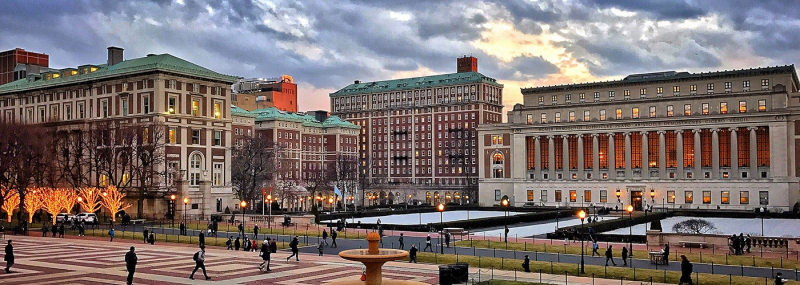
Columbia University. Photo: columbia.edu -
The Institute for Management & Innovation (IMI) is the centre for management education at the University of Toronto Mississauga (UTM). This collaborative institute provides students with access to professional masters programs in biotechnology, accounting, management, innovation and sustainability.
IMI is a cross-disciplinary institute producing mission-focused managers and future leaders with a combination of management skills and depth in their chosen field. IMI also provides an academic platform to foster close interactions and sharing of expertise between the faculty, staff and students in these programs, along with our community partners.
All graduate programs include a work term or internship and offer guided, one-on-one career coaching and support. For more information on IMI, please visit https://www.utm.utoronto.ca/imi/graduate-programsNation: Canada
No. Student: 74,502
No. of student per staff: 20.0
International Student: 22%
Female/ Male: 59 : 41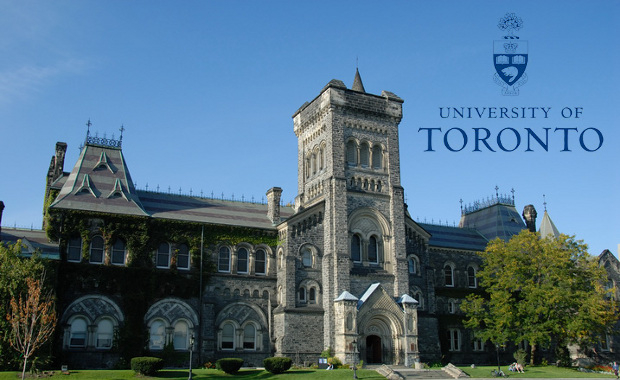
Photo: megastudy.edu.vn -
Johnson leverages the extensive resources of one of the largest Ivy League universities to deliver a robust, thoughtfully designed curriculum that is tailored to your individual interests and needs. Johnson’s location, at the heart of the largest and most diverse Ivy League University, offers its students endless opportunities to connect with all that Cornell offers while pursuing their MBA degrees.
Through coursework and by interacting with students and faculty from around the university, students can pursue broad interests for their future business careers in any subject - from real estate and hospitality, to engineering, law and Chinese.
When they complete their studies at Johnson, graduates can tap into a network of 250,000 committed and engaged Cornell University alumni. Johnson’s programs are kept deliberately small so that students can build close bonds, collaborate intensively with one another, and learn strong teamwork and leadership skills. The supportive culture of Johnson that exists within our residential and Executive MBA classrooms also gives students the freedom and support to test out new ideas and approaches in encouraging environments. Johnson graduates emerge with demonstrable leadership skills that make them highly valuable and celebrated by top organizations around the world.
Nation: United States
No. Student: 23,016
No. of student per staff: 10.2
International Student:25%
Female/ Male: 50 : 50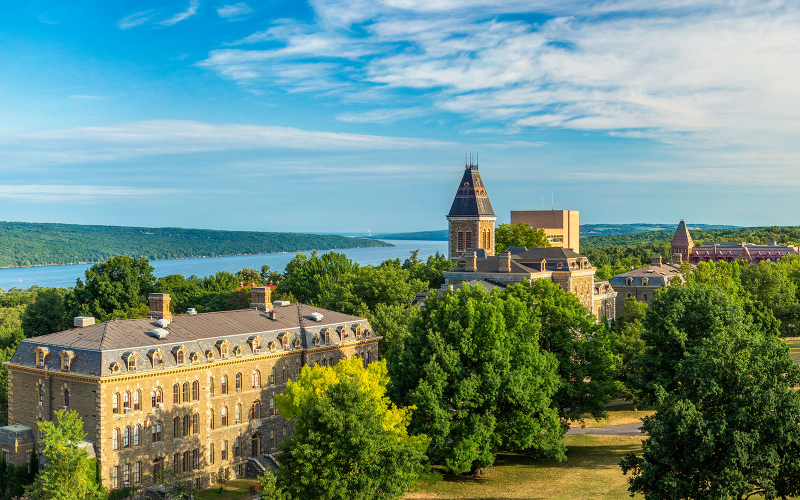
Photo: etest.edu.vn -
Founded in 1838, Duke University is a private research university located in Durham, North Carolina, named after the university’s great benefactor James Buchanan Duke’s deceased father, Washington Duke.
Its campus spans over 8,600 acres on three campuses in Durham as well as a marine lab in Beaufort. The main campus – designed largely by architect Julian Abele – incorporates Gothic architecture with the looming presence of Duke Chapel, the campus' centerpiece that seats nearly 1,600 people and contains a 5,200-pipe organ.
Duke is the seventh-wealthiest private university in America and in 2014, Thomson Reuters named 32 of Duke's professors to its list of Highly Cited Researchers. Ten Nobel laureates and three Turing Award winners are also affiliated with the university, which is the second-largest private employer in the state of North Carolina.
From its early days as Brown’s Schoolhouse, Duke has evolved into a global academic and research powerhouse. Its Levine Science Research Center is the largest single-site interdisciplinary research facility of any American university, and in 2014 Duke spread its tentacles eastwards, opening a Chinese outpost, Duke Kunshan University, which blends an American-style liberal arts education with Chinese traditions.
Its recent academic achievements include three of its students being named Rhodes Scholars in 2002 and 2006. Also in 2006, Duke researchers unveiled the first working demonstration of an invisibility cloak, to the delight of Harry Potter fans around the world.
A total of around 15,000 students attend Duke, with the majority of them being postgraduates. There is an 8:1 student-to-faculty ratio, which personalizes the learning experience.
Undergraduates have access to four academic schools including Trinity College of Arts and Sciences, and the Sanford School of Public Policy. Graduate students can enroll in nine graduate and professional schools, including Duke Law School, Fuqua School of Business, and the School of Medicine.
The university has an ethnically diverse and politically engaged student body: activism in the 1960s prompted Martin Luther King Jr to speak on campus about the civil rights movement, and, following violence in Charlottesville in 2017, the statue of Confederate General Robert E Lee was removed from the entrance to Duke University Chapel.
The majority of Duke students live on campus, where they can take advantage of the university’s enviable sports facilities and get fully involved in student life. Duke is home to over 400 student organizations – cultural, faith-based, political, and service-based – that foster student interaction and exchange, and help students develop their interests and passions.Nation: United States
No. Student: 15,489
No. of student per staff: 4.3
International Student: 21%
Female/ Male: 49 : 51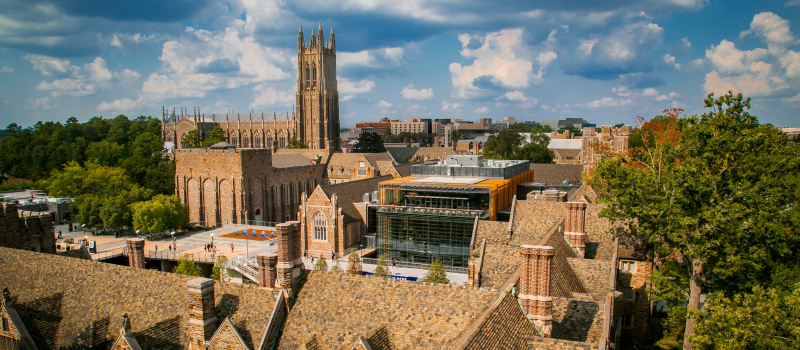
Founded in 1838, Duke University is a private research university located in Durham, North Carolina, named after the university’s great benefactor James Buchanan Duke’s deceased father, Washington Duke. Photo: Duke University -
Tsinghua University was established in 1911 in the wake of the anti-colonialist Boxer Rebellion, which saw the US fine China $30m as punishment. In 1909, President Theodore Roosevelt negotiated with Congress a reduction in the sum, with the leftover money earmarked for university scholarships for Chinese students to study in the US. Tsinghua University was established as a preparatory school for the students’ trips abroad.
Today, Tsinghua’s motto of “self-discipline and excellence” has taken it far. Most university rankings place Tsinghua among the best universities in China, and famous alumni include President Xi Jinping himself, who graduated with a degree in chemical engineering in 1979. Tony Blair, Henry Kissinger, and Bill Clinton are among the distinguished guests who have spoken at Tsinghua.
The university is academically organized into 20 schools and 57 departments covering a broad range of subjects, including science, engineering, arts and literature, social sciences, medicine. Xinya College was established in 2014 as the school’s residential liberal arts college as part of a series of reforms to undergraduate education. Unlike other Tsinghua students who must choose a specific major upon enrollment, Xinya students can declare their majors at the end of their freshman year.
The campus of Tsinghua University is located in northwest Beijing, in the Haidian district, on the former site of the Qing Dynasty royal gardens. As such it retains Chinese-style landscaping as well as traditional buildings, although many of its buildings are also western in style, reflecting its American heritage. Like its archrival Peking, Tsinghua is known for having one of the most beautiful university campuses.
On campus, students keep themselves occupied with more than just academic study (although the heavy workloads mean studying is always a priority). There are more than 110 student clubs and associations covering interests such as science and technology, health and fitness, humanities, arts and public welfare. Overseas students are particularly encouraged to join in the fun, with a host of extracurricular such as welcome parties, New Year’s parties, graduation parties, and visits to cultural and historical landmarks.Nation: China
No. Student: 37,484
No. of student per staff: 11.6
International Student: 13%
Female/ Male: 34 : 66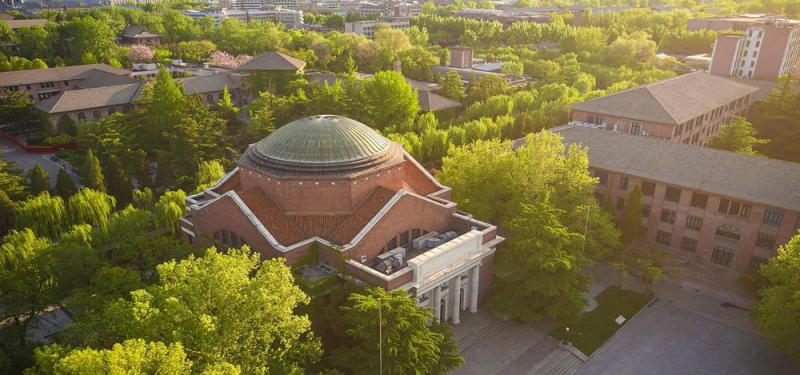
Tsinghua University was established in 1911 in the wake of the anti-colonialist Boxer Rebellion, which saw the US fine China $30m as punishment. Photo: viezone.vn -
One of the foremost research universities in the United States, the University of Michigan was founded in 1817, before Michigan had even become a state, and moved from Detroit to what is now its Central campus in Ann Arbor in 1837.
Michigan spans 780 acres, which is made up of its Central and North campuses, two regional campuses, and a center in Detroit. It has a large student body of around 46,000, with undergraduates numbering two-thirds of that number.
Michigan has been lauded for having high standards of research, and the university’s comprehensive graduate program offers doctoral degrees in the humanities, social sciences, and STEM fields (science, technology, engineering and mathematics) as well as professional degrees in architecture, business, medicine, law, pharmacy, nursing, social work, public health, and dentistry.
Michigan's body of living alumni comprises more than a half million people, which is one of the largest alumni bases of any university in the world and a valuable resource for current students when it comes to networking and building industry connections.
Around a quarter of all students are accommodated on campus, with many residence halls serving undergraduates, and family housing that is intended mainly for graduate students. There are also off-campus apartments, houses, and co-operatives, which generally house upper division and graduate students, as well as ‘theme communities’ within residence halls, where students can immerse themselves among peers with similar interests.
Michigan has more than 1,600 clubs and societies, including engineering project teams, community service organizations, and charitable projects. The Michigan Marching Band is over 100 years old and has 350 student members, and other noted musical ensembles include the University of Michigan Men’s Glee Club, a men’s chorus with over 100 members.
Michigan has a history of student activism, and there are a number of groups dedicated to various worth causes. Some, such as the United Students Against Sweatshops (USAS), devote themselves to more left-wing causes, in this case holding to account multinational companies that exploit their workers in factories, but there are also conservative groups such as Young Americans for Freedom, as well as non-partisan groups.
Cultural and ethnical student organizations help students forge smaller communities from the large university population, and publications such as the Michigan Daily, published five days a week during the Fall and Winter terms, allow students to keep abreast of the latest news on campus.Nation: United States
No. Student: 43,873
No. of student per staff: 8.3
International Student: 17%
Female/ Male: 50 : 50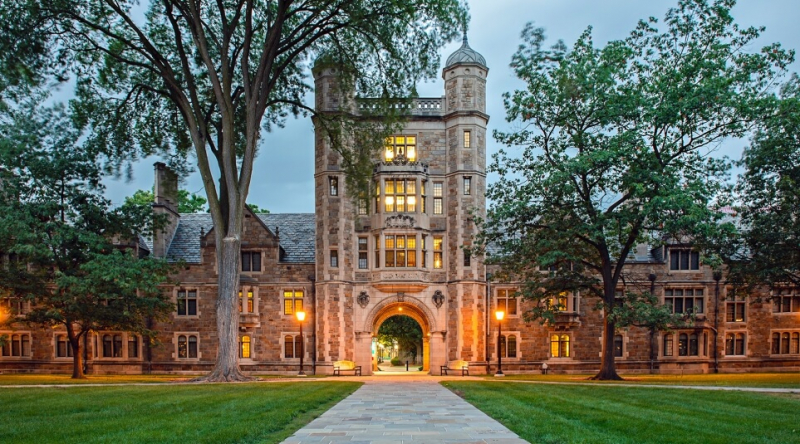
University of Michigan. Photo: michigan.law.umich.edu -
For more than 100 years, Peking University has been an elite institution of learning, recognized internationally as one of the leading universities in the world, and ranked 27th in the world by Times Higher Education (THE) in 2018.Established in 2004 and located in the thriving entrepreneurial city of Shenzhen, China, Peking University HSBC Business School
(PHBS) brings Peking University’s historical presence to the country’s south and lies at the very heart of one of the world's most promising and dynamic metropolitan areas.Accredited by EFMD for EPAS and by AACSB, PHBS has rapidly grown in reputation and as a center of international excellence in Business education. It currently offers specialized Master’s programs, dual-degree-Master’s programs with the National University of Singapore and a MBA program. The programs also include a Chinese focus in the context of a global perspective allowing students to develop a deeper understanding of business and economics in China, making them more competitive in the job market domestically and internationally or even better prepared to open a business in this dynamic country.
With internationalization as its goal, PHBS has taken a bold step by opening a new campus in Oxfordshire, England. Students admitted to the cross-border programs spend the first year of their master's degrees at the PHBS UK Campus, and their second year at the PHBS Shenzhen Campus in China, alongside Chinese peers and in an environment of cross-cultural dialogue.
Nation: China
No. Student: 38,583
No. of student per staff: 11.1
International Student: 16%
Female/ Male: 43 : 57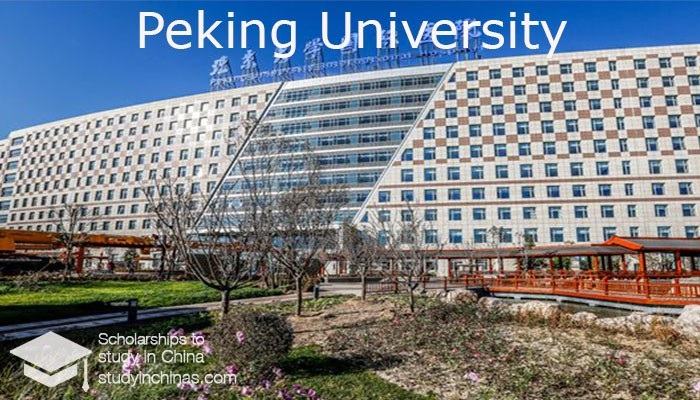
Peking University. Photo: ybox.vn

























